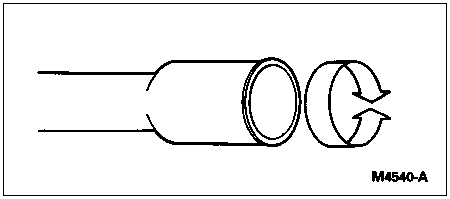Clean the evaporator core tube fittings.
For threaded connections wipe any dirt or debris from sealing surfaces with a clean, lint-free rag.
If the evaporator core tube fittings are the female spring lock design, check the inside of each fitting for scratches, corrosion, or debris from deteriorated O-rings. If scratches, corrosion, or debris are found, the leak test results may not be accurate unless the fitting is properly cleaned as follows:
- Remove any surface residue from the inside of the female spring lock coupling by polishing with 400 grit emery cloth (or equivalent). Polish the female surface by using a twisting motion so that any scratches made will not cross the O-ring sealing surface.

- Perform additional polishing of surface using 600 grit emery cloth (or equivalent).
- All residue from the polishing operations should be removed from the fitting by wiping with a lint-free rag.